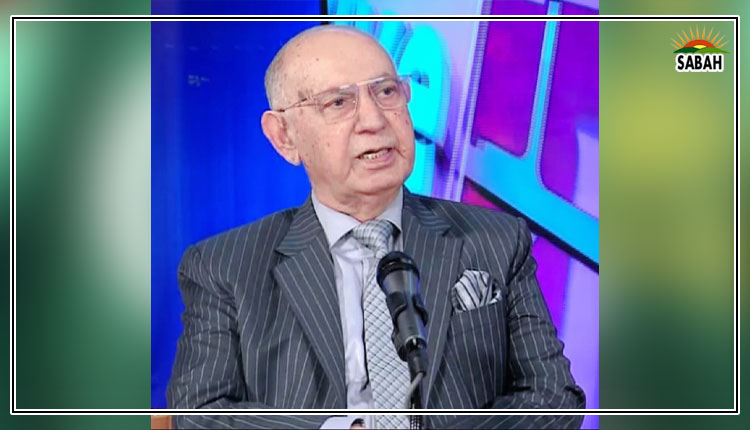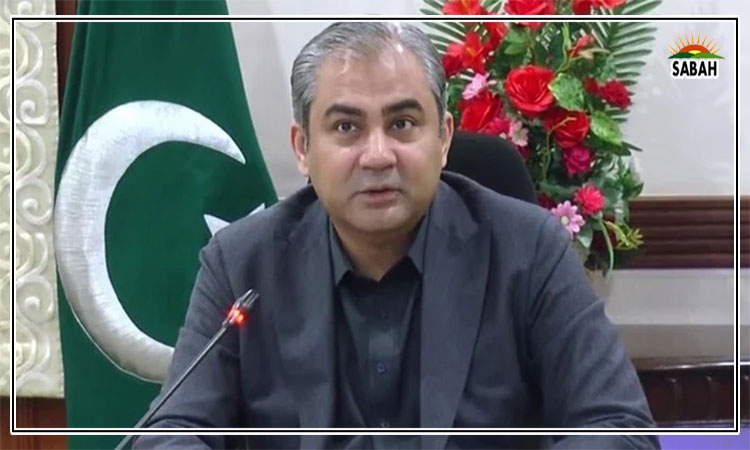A disdain for reality…Ghazi Salahuddin
We whine. And we dine. These two activities, in a proverbial sense, have apparently become the two faces of the Pakistani middle class. At the same time that things are falling apart and there is ample evidence to show that the centre cannot hold, it is business as usual for so many of us.
We tend to behave as if there is no dire and imminent threat to our well-being, as a country and as a society. But the feeling that we may be on the edge of the precipice is also hard to dispel.
At one level, there are hard facts to contend with. Every week brings its share of disasters in social, economic and political sectors. For instance, the biannual Pakistan Development Update issued by the World Bank on Tuesday bears no cheerful tidings. In fact, it is rather pessimistic in its prognosis.
However, in tune with the paradoxical theme that I have picked at the outset, the Pakistan Stock Exchange is booming and the KSE index rose to an all-time high, closing above 68,000 on Thursday. Is this an Eid gift for those who play this game?
Meanwhile, the crisis that engulfed our higher judiciary after that joint letter penned by six judges of the Islamabad High Court about meddling by security agencies is continuing to deepen. There was this onslaught of threatening letters, containing suspicious powder, sent to so many high and Supreme Court judges.
We have more stories that confirm the rising decline in the law-and-order situation. Our moral decadence is really terrifying. This week, there was a twist in the not-so-rare report of a cleric involved in child abuse. There was an uproar in the media when a cleric, arrested in Faisalabad for allegedly trying to rape a boy, was forgiven after the intervention of religious scholars.
There is more. But the point I want to make is that buffeted by the raw winds of gloom and doom, we seem to be in a fairly good mood. At least, we are not as depressed as the citizens of countries that have marched ahead of us in some tangible ways.
How come? Well, this is why I have put a variation on that idiom: wine and dine. We do have this penchant for lamenting about our deprivations and actually not being very concerned about the existing state of affairs. Incidentally, I have some evidence in this regard. What would you say if you were told that we as a people are happier than, say, the Indians and the Bangladeshis?
Consider this against the backdrop of where we are placed in terms of social indicators and material progress. All measures that are there would show that we are almost at the bottom of South Asia. This is what international surveys in many sectors have certified. The value of our currency is one example of how far behind we are lagging.
Ah, but there is this World Happiness Report published every year by the UN Sustainable Developments Solutions Network. Its index of the current year was released on March 20. In this report, our ranking is higher by many points than that of India and Bangladesh, though South Asia as a region is quite low. A land of sorrow it remains.
Anyhow, out of 143 countries surveyed, our ranking is 108. India is way behind us, at 126 while Sri Lanka is 128 and Bangladesh is 129. Yes, the report is a very detailed and complex document with separate columns for young, lower-middle, upper-middle and old people. The final ranking takes all ages into account. These rankings have almost been the same in previous years. By the way, Nepal is ahead of us at 93.
As an aside, I should add that for the seventh consecutive year, Finland is the worlds happiest country while Afghanistan is ranked as the worlds saddest country. It is not my intention to review the entire report, though I would like to highlight some of its findings. My focus is on how this relates to Pakistans place in South Asia and what we can learn from it as to the state of Pakistani society and its potential for change.
One important observation in the report is that many young people are becoming less satisfied with life. There are comments on the inequality of happiness and it is deduced that this inequality is increasing in some regions. It is pointed out that in the seven ages of man in Shakespeares As You Like It, the later stages of life are portrayed as deeply depressing. But the happiness research shows a more nuanced picture and all that is changing over time. However, the old are the least happy in Pakistan.
Taking a little diversion, let me mention an important book published in the US last week: The Anxious Generation: How the great rewiring of childhood is causing an epidemic of mental illness, by Jonathan Hajdt. It is about the noxious world of social media and the implications of a phone-based childhood.
We should naturally be very pleased with this realization that Pakistan as a country is happier than India, a neighbour with which we have had an enigmatic and combative relationship. The problem is to put it in context. When it comes to economic and social progress, India is very much ahead of us. One easy deduction would be that material progress is not a measure of emotional and spiritual well-being.
When we look at ourselves, we tend to get pessimistic about our future. Yet the findings of the World Happiness Report should be taken seriously. We should also look into what it really means. Are we in denial because the reality is staring in our face? Or is this grace under pressure, a sign of courage and resilience? And if we are happier than our more advanced neighbours, why arent we doing better?
Courtesy The News












